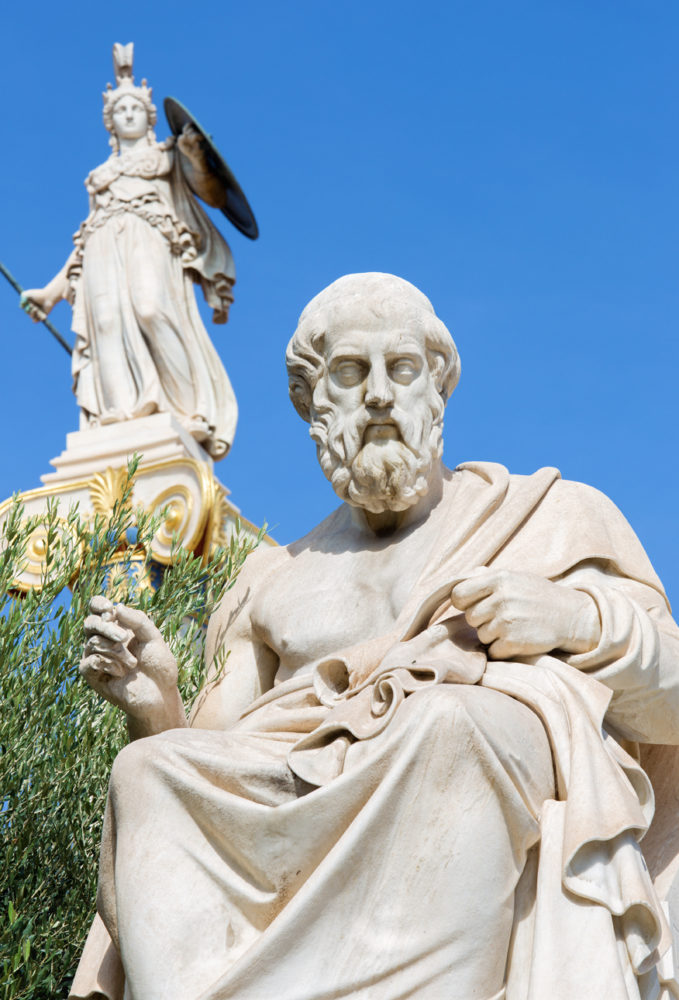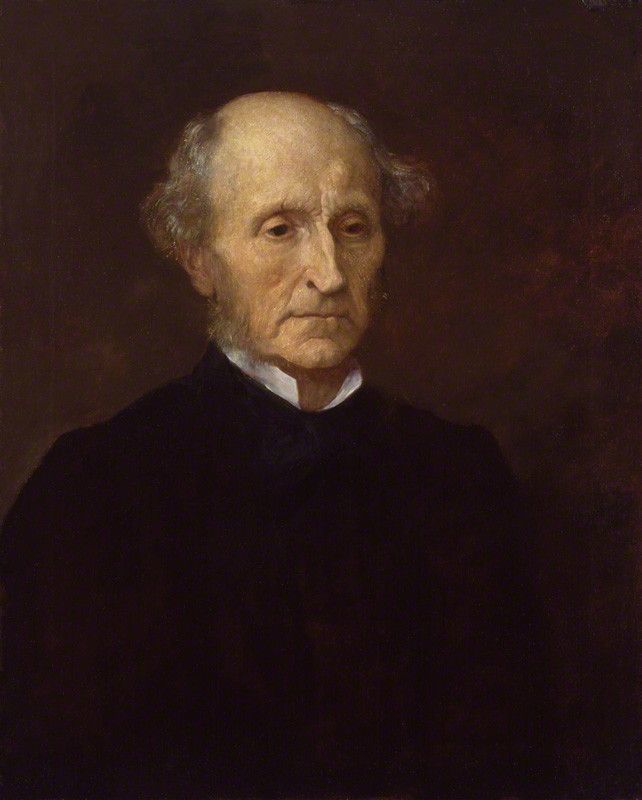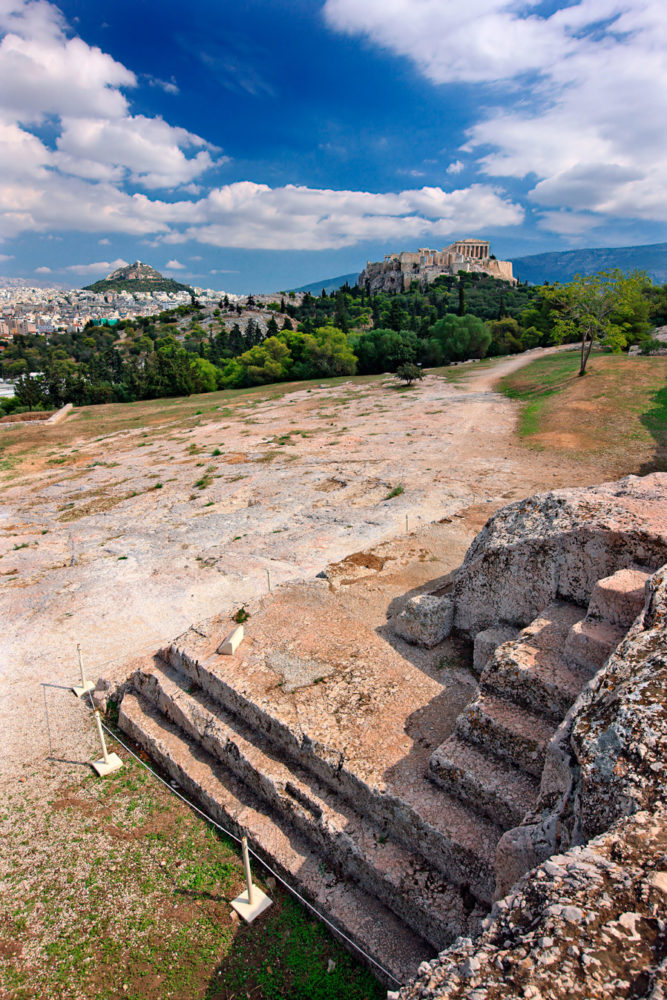 Menu
Menu
 Menu
Menu
When we think of democracy, we often think of the majority getting its way. However, modern democracies are more than just majority rule.
In a democracy, the people rule. This is the meaning of the word democracy. In Greek, demos means people and kratein means rule.
At first glance, the idea that the people rule seems simple. However, the more we think about democracy, the more complicated it becomes. Surely not every person can rule. If not, then who actually rules?
To understand who actually rules in a democracy, we need to look at its origin and its current state.

The Greek philosopher Plato alongside Athena, the Goddess of War, Reason, and Crafts. Plato feared that unchecked democracy would degenerate into tyranny.
The original western democracy was Athens of 5th century BC. In ancient Athens, citizens assembled in the public square to debate policies, vote on laws, and choose public officials. This type of democracy—where everybody directly participates in all law-making—is called direct democracy.
Athenians took their direct democracy seriously. The city-state even paid citizens a day’s wages to attend the assembly. However, only free males 20 or older—an estimated 10-20% of the population—had the right to participate in Athenian political rule.
Around the same time that direct democracy appeared in Athens, representative democracy appeared in Rome. In ancient Rome, citizens elected representatives to govern on their behalf. These elected representatives assembled to consider and vote on laws and public policies.
The Charter of Rights and Freedoms grants Canadians individual rights such as freedom of expression, freedom of worship, and freedom of the press.
Representative democracy has a major advantage over direct democracy: it allows citizens to have a say in governing, without being directly involved in every issue. As society became more complex, representative democracy became a more practical way for citizens to have a role in government and law-making while also retaining their freedom to pursue interests outside of governance. Most democracies today, including Canada, use representative systems of government.
Regardless of whether it is direct democracy or representative democracy, “the people rule” does not mean that every single person will get their way. Democracy means that each individual’s vote should count equally. When all the votes are counted, the will of the majority should be enacted.
However, as societies have advanced, so too has the understanding that the will of the majority cannot be left unrestrained. Today, the consensus is that the majority should only get their way if they do not trample the rights of minorities.

John Stuart Mill, a guiding thinker of liberalism. He believed that you must hear people out in their own words to make reasoned conclusions about their views.
To ensure that the majority gets its way while minorities have their rights protected, Canada has embraced something called liberal democracy.
Liberal democracy combines the ideas of liberalism and democracy. Political scientist Yascha Mounk describes the combination of liberalism and democracy in his book The People vs. Democracy:
In other words, liberal democracies such as Canada enact the popular will, but also have institutions and processes in place to protect minority and individual rights.
Canada’s embrace of liberal democracy is reflected in the Charter of Rights and Freedoms. The Charter grants Canadians individual rights such as freedom of expression, freedom of worship, and freedom of the press.
The Charter also recognises that we are individuals as part of a larger society. This is why the Charter affirms our rights to freedom of association. We have the right to gather together in groups of common belief. From political parties to religious groups to environmental clubs, our rights to be part of a group are protected by the Charter.

The stepping stone (speaker’s platform) of the Pnyx in Athens. Here citizens assembled to debate and vote on laws.
Canada is not alone in subscribing to liberal democracy. Liberal democratic values have been embraced across the western world, from the United States to New Zealand. Even the so-called Nordic social democracies of northern Europe, such as Finland and Norway, generally follow the principles of liberal democracy. Nordic social democracies, however, sometimes emphasise wider social goals over individual rights.
Liberal democracies emerged because citizens fought for liberal values. Liberal democratic constitutions and institutions were created to meet the public’s demand. However, there is no guarantee that liberal democracy is here to stay. Laws and institutions are human constructs. Just as they have been built up, they can be torn down.
The word liberal can describe everything from a generous spirit to questionable morals. Its many meanings complicate knowing what is meant when the word liberal is used.
In a philosophical context, liberal is easier to define. Liberal is rooted in the Latin word liber, which means free. Being free is the basis of liberal philosophy. As such, liberalism embraces two beliefs:
In short, liberalism emphasizes reason and individual rights as a path to freedom.
Freedom in liberal philosophy is constrained by the harm principle: people should be free to do what they wish, so long as their freedom does not harm others.
Canadians widely accept liberal values. In fact, every major Canadian political party falls under liberalism’s philosophical umbrella. Broadly, the Conservative Party, the Green Party, and the New Democratic Party are just as liberal as the Liberal Party.
To be sure, Canada’s political parties have differences—sometimes profound—but none are foundationally committed to overturning the liberal norms of reason and individual rights.